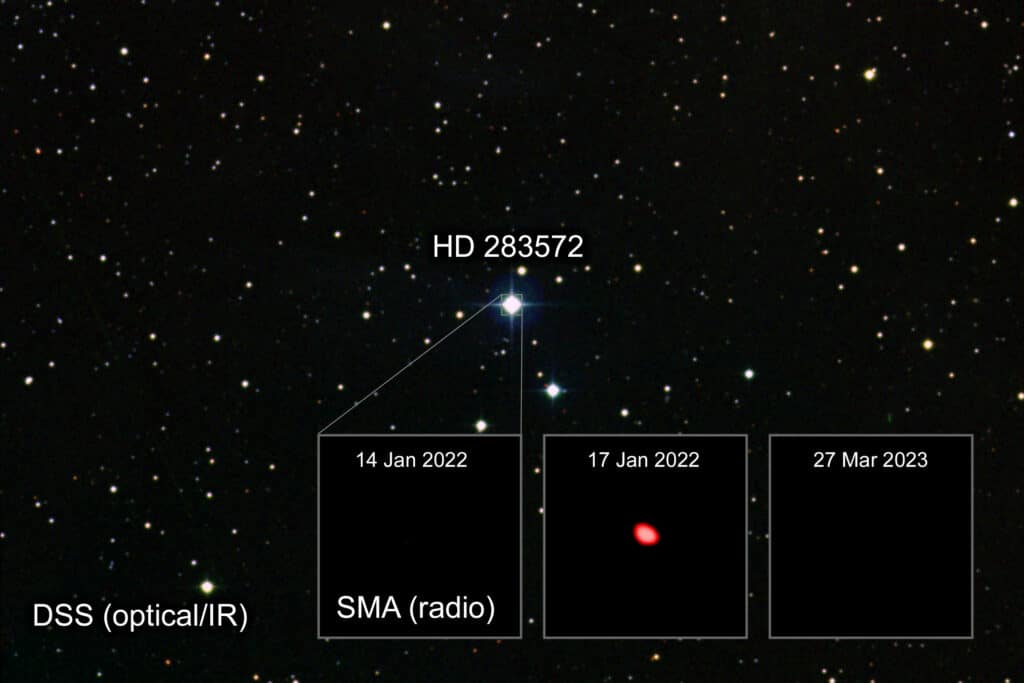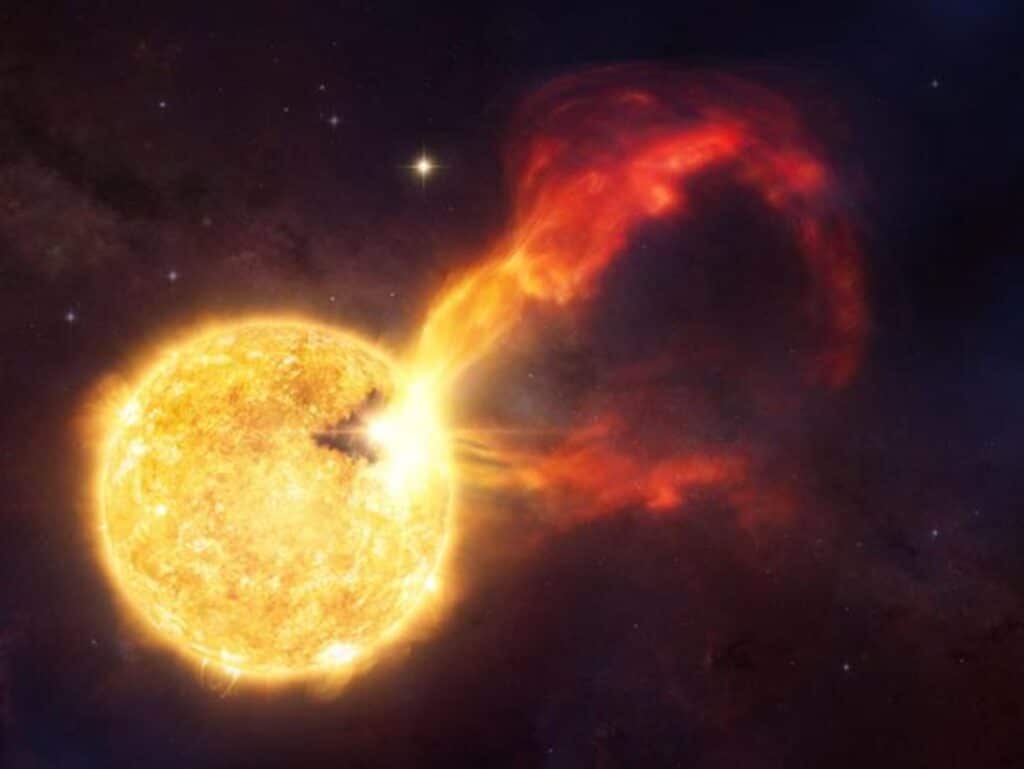A violent eruption from a young Sun-like star is revealing potential impacts on the formation of planets. A team of astronomers from the Smithsonian Astrophysical Observatory (SAO) made the revolutionary discovery using the Submillimeter Array (SMA) in Hawaii. They observed an extraordinary eruption from a young star, HD 283572, which became more than a hundred times brighter in just a few hours.
HD 283572 is a youthful star, less than 3 million years old, making it significantly younger than our Sun, which is over 4.5 billion years old. The star is located 400 light-years away and is 40 percent more massive than the Sun. At this early stage in a star’s life, Earth-like planets begin to form around it. Researchers initially aimed to detect the faint glow of dust involved in the planet formation process. Instead, they encountered an unexpected and much more dramatic phenomenon.
“We were surprised to see an extraordinarily bright flare from an ordinary young star,” says study author Dr. Joshua Bennett Lovell, an SAO astronomer and SMA Fellow, in a media release. “Flares at these wavelengths are rare, and we had not anticipated seeing anything but the faint glow of planet-forming dust.”
Stellar flares are intense bursts of radiation that can significantly increase a star’s brightness. They occur when a star’s magnetic field, twisted by its rotation, suddenly releases stored energy, accelerating charged particles and causing a luminous outburst.
This particular flare from HD 283572 is notable not only for its brilliance but also for its rarity at millimeter wavelengths, which are part of the radio spectrum and can penetrate dust that often obscures optical observations.
“HD 283572 appeared dormant for months before we caught its eruption,” notes Dr. Lovell. “Every time we pointed the SMA back at the star after this flare, we saw nothing. Our findings confirm that these flare events are rare at millimeter wavelengths, but that these can be extremely powerful for stars at this young age.”
The energy released during the flare was immense, equivalent to detonating Earth’s entire nuclear arsenal in just a millisecond, repeatedly, for nearly half a day.
“If we account for the wavelengths of the star’s light that the SMA did not observe, we expect it could have even been many times more energetic,” explains study second author Dr. Garrett Keating, SMA Project Scientist.

The implications of such a powerful flare are significant, especially for any planets forming within the star’s vicinity. The intense radiation and energetic particles could disrupt the growth of planet atmospheres or even strip away existing atmospheres, posing a severe challenge to the development of habitable environments.
The cause of the flare remains a mystery, with potential explanations ranging from interactions with unseen companion stars or planets to periodic activity related to starspots. Regardless of the trigger, the event underscores the dynamic and sometimes hostile conditions within young planetary systems.
To further understand the frequency and nature of flares from young stars like HD 283572, ongoing observations are being conducted.
“We’re running a new SMA campaign right now to study young stars similar to HD283572,” says Ramisa Akther Rahman, an undergraduate senior from the College of William and Mary, who was a 2023 summer intern with Dr. Lovell in the SAO’s Research Experience for Undergraduates program. “How often do they flare, and what are their typical properties? By combining SMA data with longer wavelength observations, we are also able to probe the physics of flares and their emission mechanisms. I have worked on that using archival data from the Very Large Array.”
This study not only provides a glimpse into the early stages of stellar and planetary evolution but also emphasizes the importance of millimeter-wave observations in uncovering the secrets of the cosmos. The findings are published in The Astrophysical Journal Letters.












